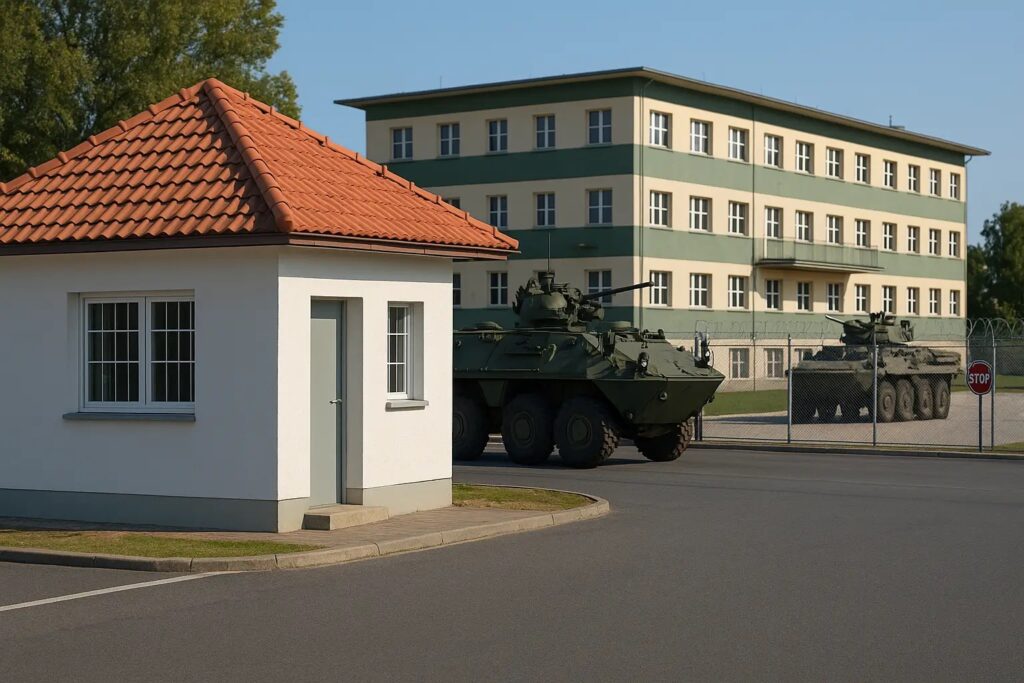Understanding Military Stations: The Backbone of Defense Operations
Military stations are not just buildings or compounds—they are the living, breathing cores of a nation’s defense infrastructure. These are the places where troops live, train, coordinate, and mobilize. While they may go unnoticed by the general public, their role is critical to both national security and military readiness.
What Exactly Is a Military Station?
A military station refers to a specific location or complex where armed forces are permanently based. Unlike temporary field camps or mobile units, these stations are established, long-term areas that serve as headquarters, training grounds, or operational centers.
They are often home to multiple units of the armed forces and are equipped with housing, command centers, armories, hospitals, schools, and supply depots—all designed to support the logistical and operational needs of military personnel and their families.
Key Functions of a Military Station
Operational Readiness
Military stations ensure that personnel and units remain ready for rapid deployment. They include training facilities, shooting ranges, simulation centers, and maintenance areas for vehicles and weaponry.
Strategic Positioning
Most military stations are placed at strategic locations—close to borders, coastal areas, or key cities. Their location is chosen to optimize defense, response time, and control over regional operations.
Administration and Command
These stations serve as regional command hubs where orders are passed, policies implemented, and operations monitored. Each station is managed by a designated commanding officer responsible for its security, efficiency, and discipline.
Types of Military Stations
Military stations vary in scale and purpose, but can generally be grouped into three types:
1. Cantonments
Large, permanent military towns that house administrative offices, residential areas, schools, and hospitals. They are highly developed and often semi-autonomous in governance.
2. Garrisons
Medium-sized installations typically hosting a single regiment or battalion. These are more focused on operational readiness than civilian support.
3. Training Centers
Stations dedicated to boot camps, combat training, or specialized courses (engineering, medical, or intelligence training). These are usually located in isolated or rugged terrains.
The Structure of a Military Station
Command Hierarchy
Each station has a Station Commander, usually a senior-ranking officer such as a Brigadier or Colonel. Their responsibilities include managing day-to-day operations, security, resource allocation, and coordination with higher commands.
Under the Station Commander, various departments handle:
- Personnel and welfare
- Logistics and supplies
- Intelligence and security
- Technical maintenance
- Health and education services
Civil-Military Facilities
In larger stations, especially cantonments, facilities often resemble small cities—with marketplaces, parks, places of worship, and even courts—all managed under military administration.
Life Inside a Military Station
For Military Personnel
Life in a station is a blend of discipline and support. Soldiers have access to essential services, family housing, recreational activities, and spiritual support. Their routines are highly structured, with designated times for training, patrol, duties, and personal time.
For Families
Military families living in stations benefit from on-base schools, clinics, and secure housing. These stations are designed to create a stable environment while their loved ones serve the nation.
Military Stations in India: A Notable Example
India has one of the largest networks of military stations, governed by specific regulations. Under Cantonments Act 2006, the Indian Ministry of Defence manages over 60 cantonments across the country.
Each of these stations is maintained by a Station Headquarters, which functions under the regional command. The Station Headquarters oversees:
- Infrastructure and estate management
- Civil-military relations
- Local coordination with civil agencies
- Internal administration and security
Strategic Relevance in Modern Warfare
In 2025, military stations are more relevant than ever. With evolving threats—cyberwarfare, hybrid warfare, drone strikes, and terrorism—stations are now being upgraded with digital command centers, advanced surveillance, and rapid response systems.
Additionally, many stations now house joint units involving army, air force, and navy components, reflecting a more integrated defense strategy.
Challenges Faced by Military Stations
Infrastructure Aging
Many older stations suffer from outdated infrastructure and need modernization to handle 21st-century threats.
Urban Encroachment
As cities grow, civilian development often encroaches upon station land, leading to legal and administrative disputes.
Environmental Impact
Some stations—especially those in ecologically sensitive zones—raise concerns about environmental degradation due to military activity.
Conclusion: Why Military Stations Still Matter
A military station is much more than a fenced compound. It is a community, a command center, and a critical asset in national defense. In an era where warfare evolves with technology and geopolitical shifts, these stations continue to serve as the first line of readiness and response. Their role may often remain behind the headlines—but without them, no military can truly function.

